Teapots today come in a baffling array of shapes, sizes, and materials but still resemble the basic shape of the very first teapots.

Origin of The Teapot
The teapot is as essential to the enjoyment of tea as the leaf itself. The first teapots appeared in China, where handled wine pots and water ewers inspired the invention and the basic design. Some report the origin of the teapot around 1500 with the Yixing clay pot.
The shape of early Yixing teapots was similar to the wine pot. During this time, loose leaf tea was becoming the preferred form of tea, in place of bricks and powders. The advent of loose leaf tea helped advance the production of teapots.
Every tea-drinking culture has created its preferred vessel for consuming this ancient beverage. Most historical accounts agree that effective use of clay teapots came into production during the Ming Dynasty (1368-1644), with unglazed stoneware teapots being produced in Yixing (pronounced yee-shing) potteries.
Before Loose Leaf Tea
Before teapots, the traditional tea method was brewing in open pans or preparing tea in a cup by whisking the powdered tea into a paste.
In ancient China, ground or whole tea leaves were compressed into a mold forming a tea brick. Tea bricks made it easy to transport and were commonly used as currency in trading. Pieces of the tea were broken from the tea brick and boiled in kettles or pots.

Shades of Earl Grey - $19.95
from: Firebelly Teas Inc.
Powdered teas became famous in the Song Dynasty (960-1279). Powdered tea was placed in cups and whipped or whisked as boiling water poured over it. Similar to the Japanese matcha tea ceremonies of today.
Form Follows Function
During the Ming Dynasty, the proliferation of loose leaf tea brought about the earliest examples of teapots, much as we know them today. Teapots from this period were made of clay from the Yixing region of China.
"The teapot has not always been the undisputed lord of the tea service; historically, the teacup comes first."
The Tea Lover's Treasury, James Norwood Pratt
Noted potters used the Yixing clay in pottery since the Song Dynasty. The finished stoneware is usually brown or red and is left unglazed.
The Most Famous Teapots in the World
The Yixing is named after a city in the Jiangsu Province of China. The color of the pots is due to the local iron ore. Some consider the Yixing as the first "official" teapot.
During the Song Dynasty, ceramics production was expanding. Teapots began to appear towards the end of the Song Dynasty. Early teapots were made from unglazed purple sand clay or zisha. The shape evolved from the tall handled wine pots or water ewers.
Tea was consumed in small quantities, so the teapots were small. The Chinese gave teapots a lid to maintain the flavor of the steeped tea. The addition of handles to the side made for ease of lid removal.
Yixing clay teapots were hand-formed and carved. The design properties made it ideal for brewing tea. Unglazed clay absorbed the flavors and aromas of the tea, seasoning the pot after many uses. For this reason, each teapot is dedicated to a specific tea type. The small size made them ideal for individual use.
Thanks to the high iron content, the zisha clay became a practical choice for the teapot as it tolerates near-boiling water without cracking. The color doesn't fade, nor does the clay retain any color or odor. The tight lids retain the aroma, while the zisha clay keeps the tea warm for more extended periods compared to porcelain.
With repeated use, the surface develops a fine patina. Carefully maintained, clay pots can last a lifetime.
Related:
- How To Use A Yixing Teapot For Better Tasting Tea
- Japanese Cast Iron Teapot
- How To Brew Tea Perfectly Every Time
Fast Forward 500 Years Later
To this day, Yixing teapots are coveted and remain China's gold standard for brewing vessels. The city of Yixing, in Jiangsu Province, continues to produce this famous teapot.
Zisha clay is a natural resource obtained from red ore deposits from Yixing's two mountains. However, in 2006 China passed a law to protect over-mining of the ores.
Pottery artisans are revered for their precision, and the craft is very competitive. Artists are required to take a certification, of which there are seven levels. The top-level is a national certification that only 12 people can hold at one time.
Each handcrafted pot must adhere to specific parameters, generally taking four days from start to finish. Everything must fit precisely. The top of the spout and handle need to be level with the lid. The teapot is tested for its functionality, measuring how smoothly the tea pours from its spout.
Yixing Teapots Today
The factory-produced Yixing teapots are made in molds, while artisan-made teapots are crafted by hand. The handmade pots have seams in the interior. The seams occur because potters cut out rectangular sheets of clay and seal them together to make the main body. Then the spout, lid, and handle are joined to the body. Pots made from a mold will not have a seam.
The teapot made from actual Yixing clay will serve you well no matter the price point. Yixing pots are primarily used for brewing black, oolong, or Puer teas and are sometimes used for brewing green teas.
Teapots From England

Tea reached Europe in the 1600s, and the necessary teaware followed. The early teapots were small with little rounded bodies of the Yixing style.
The early imported tea was green tea, but as that did not stay as fresh over the long voyage, black tea became the preferred tea.
Black tea is consumed at higher temperatures, prompting the development of handled teacups and hard porcelain teapots.
The Chinese invented translucent glazed pottery during the Tang Dynasty, known as porcelain. The 17th-century Europeans devoured the beauty of Chinese ceramics but could not replicate the hard porcelain.
The hard porcelain could withstand the hot water used for brewing black tea better than the European's softer earthenware teapots. The softer earthenware pastes were extremely fragile and often exploded when exposed to boiling water.
In 1707, Johann Bottger of Germany invented harder stoneware by adding kaolin clay to the mix, a precursor to European porcelain. Once English artisans mastered making porcelain teapots by the middle of the 18th century, teaware manufacture proliferated, sprouting a whole new industry.
Color glazes, hand-painted designs, and engraved transferware techniques with Chinese motifs became popular.
Today's teapot reflects hundreds of years of history with choices previously unimaginable. Stoneware, porcelain, and glass teapots, along with various shapes and sizes, are available whatever your brewing needs.
Further Reading
Source:
- The Story of Tea: A Cultural History and Drinking Guide by Mary Lou Heiss and Robert J. Heiss
- The New Tea Lover's Treasury by James Norwood Pratt
- The Book of Tea by Okakaura Kakuzo
- Tea: East and West by Rupert Faulkner



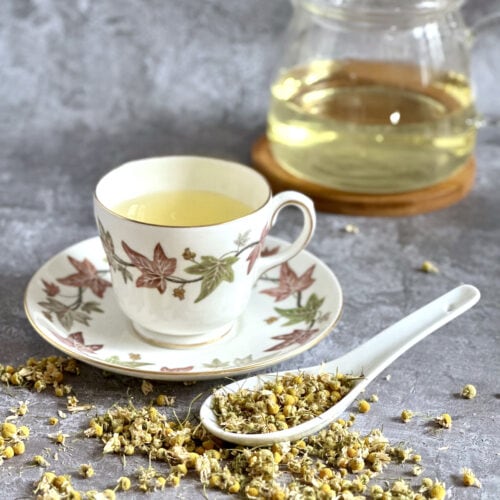
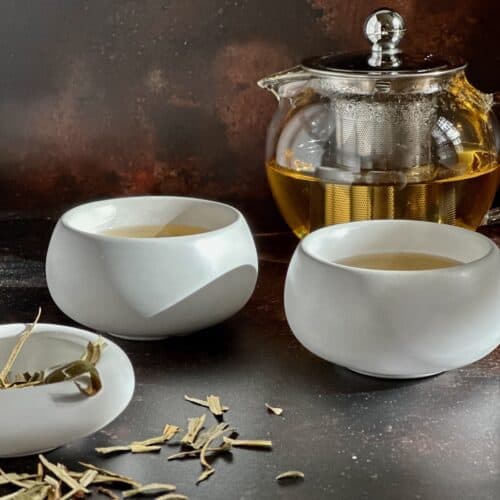
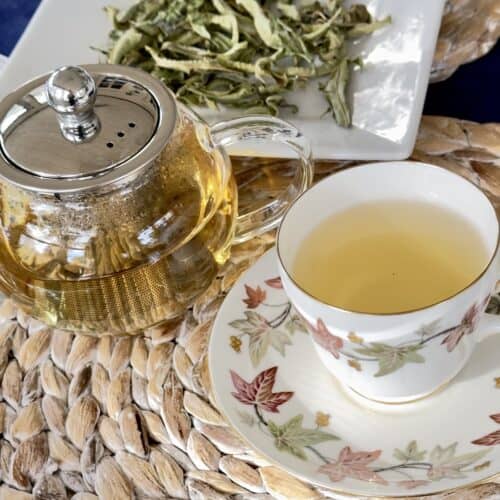
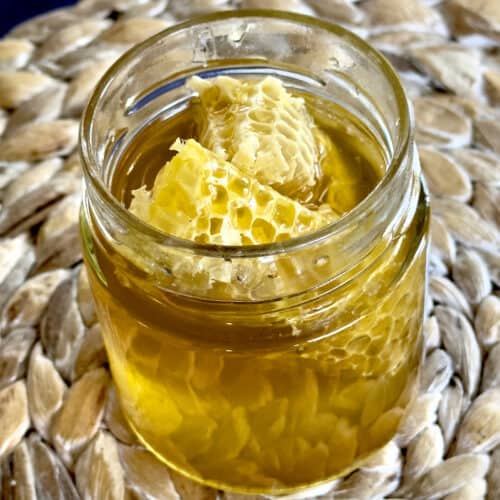
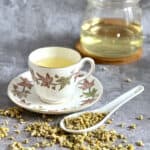
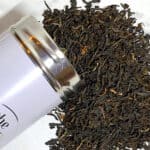
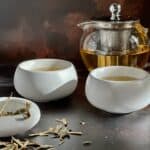
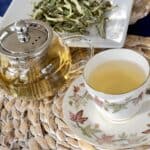


Janice
This was a great article and the one referenced about the Japanese kettle. Thank you.
I’m very interested in Japanese culture (as opposed to Chinese), so any more info regarding the Japanese aesthetic in regards to your expertise or any off shoot would be appreciated.
Thank you!
Janice Robinson